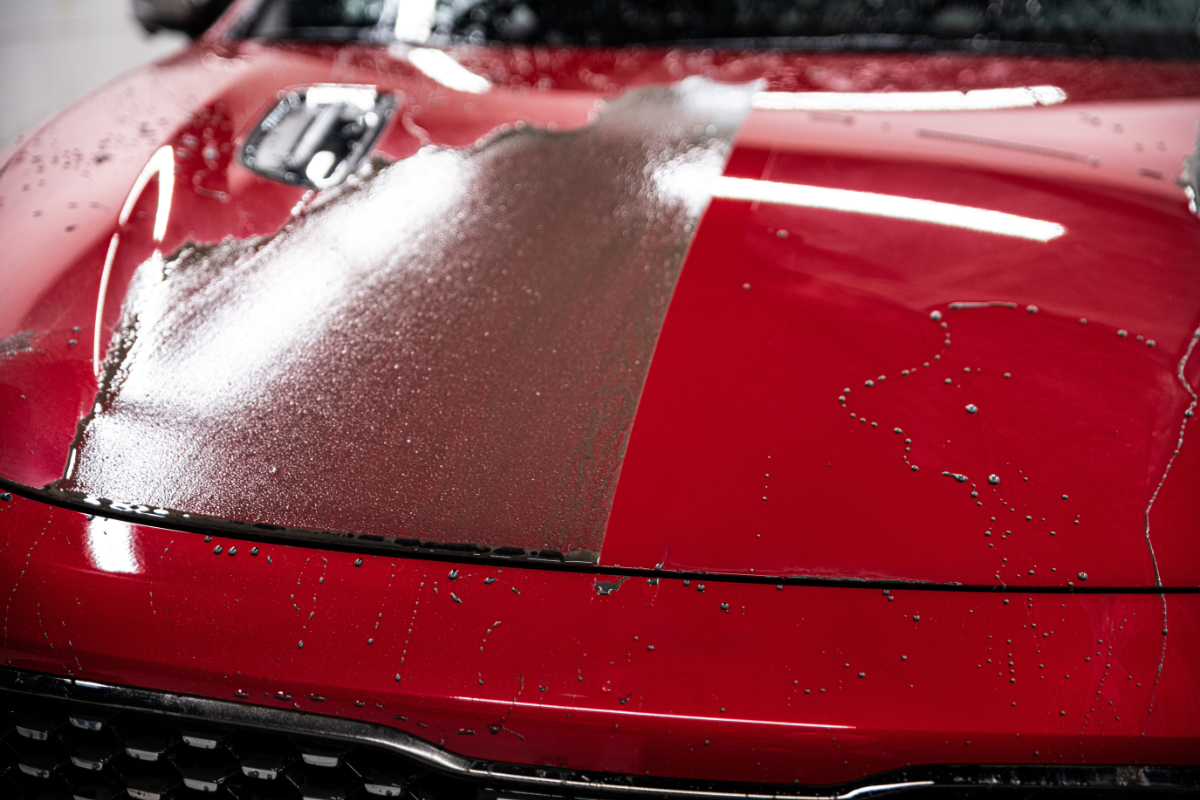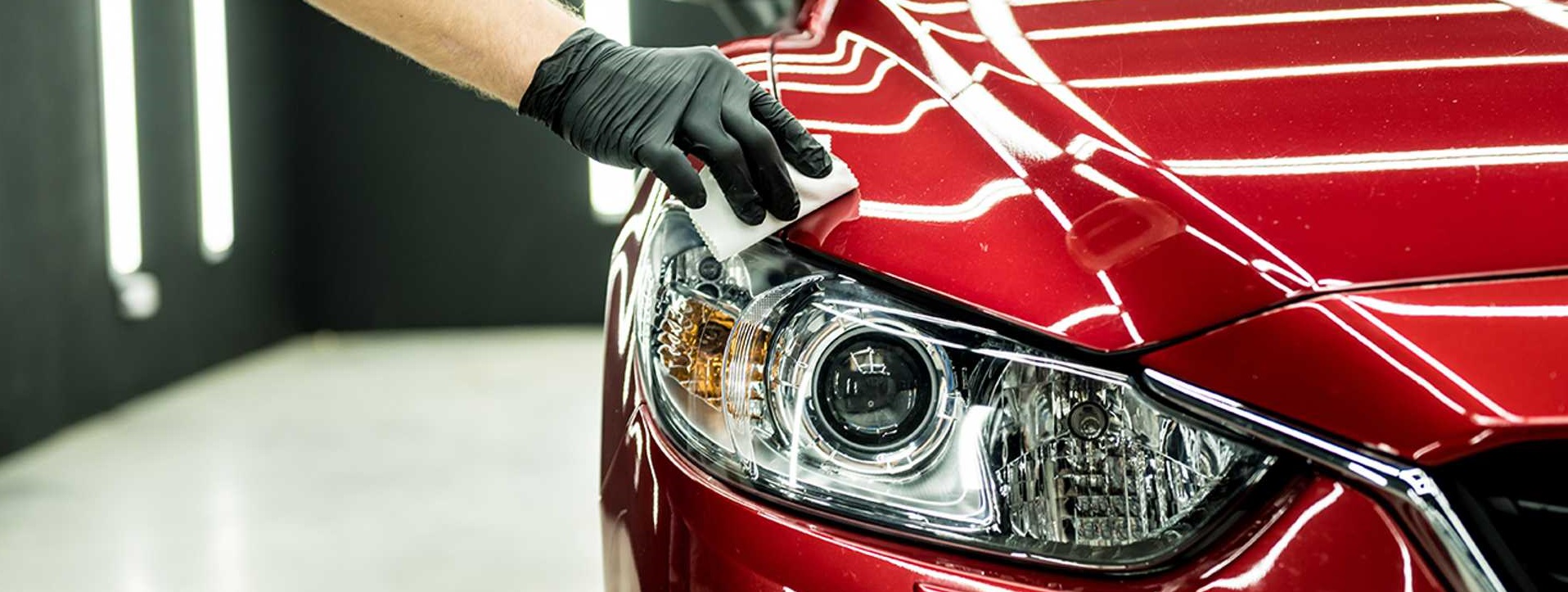Ceramic Finish vs. Typical Wax: Which Offers Much Better Long-Term Defense?
The debate between ceramic layers and traditional wax for vehicle defense has garnered considerable focus among vehicle fanatics and specialists alike. While both satisfy of safeguarding paint, their distinctions in sturdiness, application, and long-lasting maintenance expenses may influence a consumer's choice. Ceramic coverings boast exceptional durability and resistance to environmental elements, yet the complexity of their application questions about availability and usefulness. As we explore these contrasting alternatives, it comes to be important to take into consideration not just the instant benefits yet additionally the ramifications for car care with time.
Summary of Ceramic Finish
Ceramic layer has gotten significant popularity among automobile enthusiasts and detailers alike because of its sophisticated safety high qualities. This innovative innovation is designed to produce a durable, hydrophobic guard over a vehicle's paint surface area, considerably boosting its resistance to environmental impurities such as dust, UV rays, and chemical stains. Unlike typical wax, which supplies a momentary layer of protection, ceramic finishes bond at a molecular degree with the paint, supplying durable longevity-- usually expanding beyond two years with correct maintenance.
The application procedure entails careful prep work of the vehicle's surface area, including cleaning and brightening to make certain optimal attachment. When used, the finish cures to create a durable layer that not only adds depth and gloss to the paint yet also simplifies maintenance. With its hydrophobic buildings, ceramic covering enables water and dust to glide off more easily, lowering the regularity of cleans and minimizing the danger of swirl marks.
In addition, ceramic layers are offered in different solutions, enabling individuals to select products customized to their specific demands and choices. Overall, ceramic finishing represents a considerable advancement in paint defense technology, providing exceptional performance compared to traditional alternatives.
Review of Conventional Wax
Typically considered a staple in automotive care, wax serves as a prominent option for those looking for an uncomplicated approach to boost and protect their automobile's paint - ceramic coating. Automotive wax usually consists of all-natural active ingredients, such as carnauba, or synthetic compounds, made to develop a protective layer on the surface area of the paint. This layer not just improves the automobile's gloss and radiate but also provides a barrier versus environmental impurities
The application of wax is usually user-friendly, making it obtainable for both experts and Do it yourself lovers. Once applied, wax calls for a treating period, after which it hardens to form a protective shell.
Nonetheless, while wax is effective for enhancing the aesthetic allure of an automobile, it is very important to keep in mind that the defense it provides may require a lot more regular reapplication compared to alternate items, such as ceramic finishings. On the whole, conventional wax continues to be a preferred option for those focusing on convenience of use and immediate aesthetic renovation.
Resilience and Longevity Contrast
While both ceramic finishings and standard wax offer protective benefits for auto paint, their longevity and long life differ significantly. Typical wax, commonly made from all-natural carnauba or artificial polymers, typically supplies a safety layer that lasts around 3 to six months. This fairly short life-span demands normal reapplication to preserve ideal protection.
In contrast, ceramic finishes are crafted from innovative nanotechnology, creating a covalent bond with the paint surface area. This causes a robust, hydrophobic layer that can withstand for two to 5 years, depending on the item and ecological conditions. The exceptional sturdiness of ceramic finishes is credited to their chemical structure, which provides boosted resistance to scrapes, UV rays, and oxidation.

Protection Against Environmental Factors
Shielding a vehicle's paint from ecological variables is vital for keeping its appearance and worth over time. Vehicles are constantly subjected to website link a variety of components, consisting of UV rays, bird droppings, tree sap, acid rain, and roadway gunk, every one of which can compromise the integrity of the paintwork.
Ceramic coatings supply a robust defense against these ecological aggressors. Unlike standard wax, which can break down swiftly under UV exposure, ceramic coatings develop a resilient, hydrophobic layer that stands up to the harmful effects of sunlight and environmental contaminants. This innovative modern technology creates a chemical bond with the vehicle's surface area, supplying premium protection that lasts for many years, even in harsh problems.
Standard wax, while simpler to apply, normally calls for regular reapplication and provides restricted resistance to contaminants and UV rays. Over time, it can break down, leaving the paint vulnerable to scratches and oxidation. In contrast, ceramic coverings maintain their safety top qualities much longer, considerably minimizing the threat of paint damage and making certain that the automobile maintains its visual allure. Consequently, ceramic finishings are significantly acknowledged find more information as the premium selection for long-lasting defense against environmental aspects.
Application and Upkeep Differences
The techniques of application and subsequent upkeep for ceramic coverings and conventional wax vary dramatically, impacting the overall customer experience and effectiveness of each item. Ceramic coverings call for an even more elaborate application process, typically entailing surface prep work that includes cleaning, decontaminating, and polishing the vehicle. As soon as the surface prepares, the ceramic finish is applied in a controlled atmosphere, commonly needing expert knowledge to make sure appropriate treating and bonding to the paint.

While both items boost lorry look, the longer-lasting protection offered by ceramic finishings may warrant their preliminary investment, in spite of the more requiring application process. On the other hand, typical wax remains a prominent choice for those seeking a less complex, albeit temporary, service.

Conclusion
Finally, ceramic coatings show substantial advantages over typical wax in regards to toughness and ecological security. With a life-span prolonging two to five years and remarkable resistance to UV rays, dust, and chemical discolorations, ceramic layers supply an extra reliable service for long-term automobile upkeep. Although the application procedure may need professional experience, the resulting cost savings and decreased regularity of reapplication underscore the value of ceramic finishings for those looking for optimal vehicle protection.
The dispute in between ceramic finishes and typical wax for automobile protection has garnered considerable interest among automobile fanatics and professionals alike. Unlike conventional wax, which gives a short-lived layer of security, ceramic finishings bond at a molecular degree with the Discover More paint, providing long-lasting resilience-- often extending past 2 years with correct maintenance.
While both ceramic coatings and typical wax deal safety benefits for auto paint, their toughness and long life differ considerably. For car lovers looking for long-lasting defense, ceramic finishes offer an engaging benefit over typical wax products.
In conclusion, ceramic finishes show significant advantages over standard wax in terms of sturdiness and ecological protection.